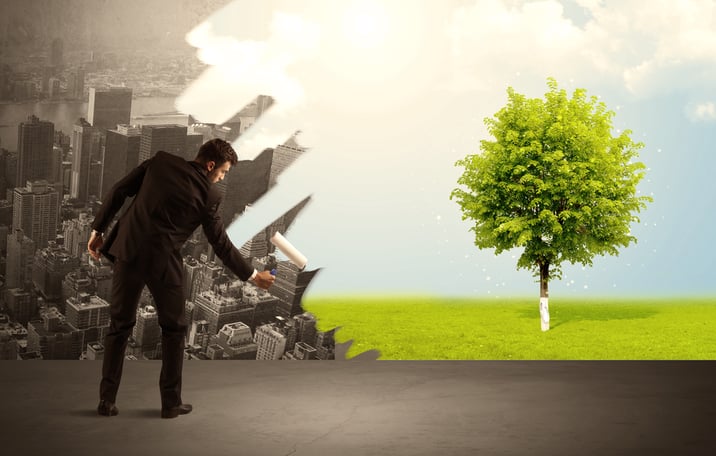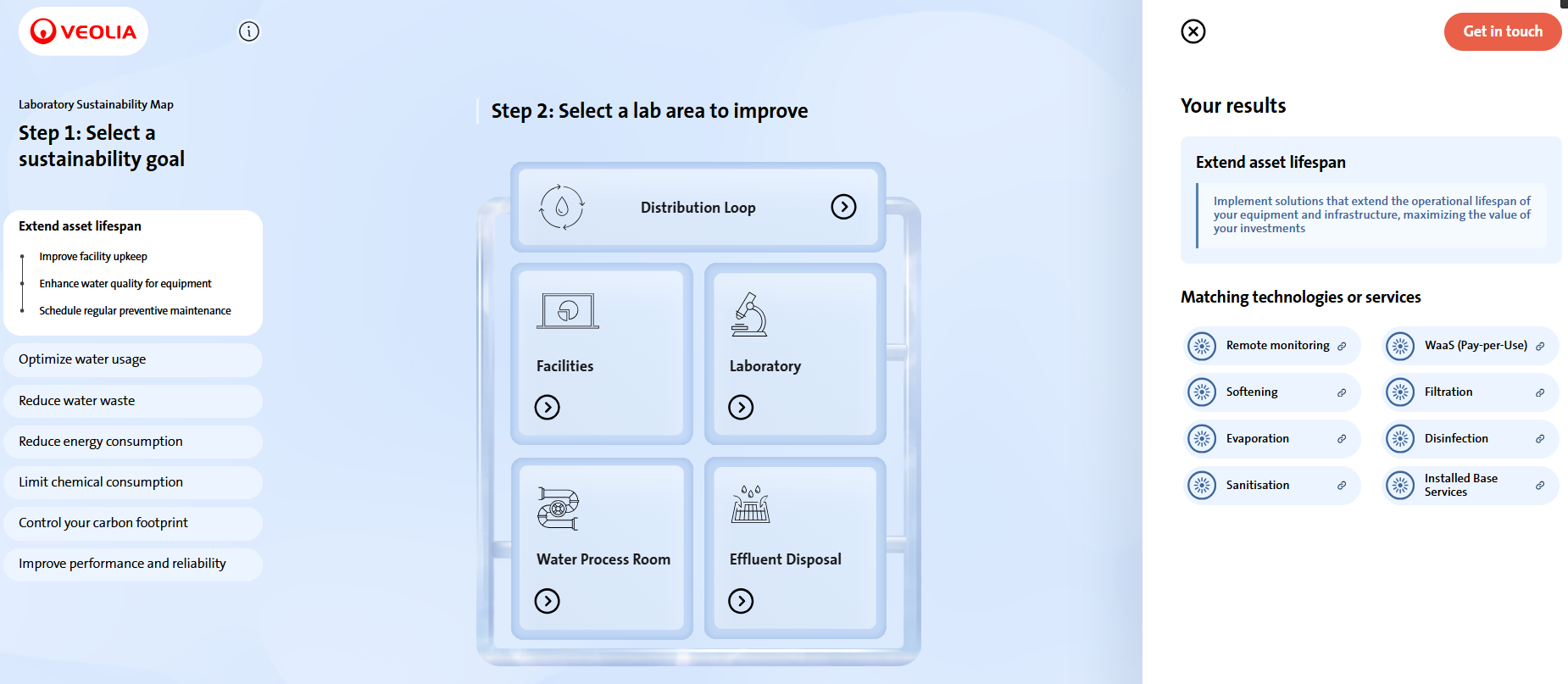In scientific research, laboratories play a crucial role in driving innovation across sectors like pharmaceuticals, food science, and environmental studies. They can come at a steep environmental cost. Labs consume up to 10 times more energy and 4 times more water than typical office spaces (Source), making them some of the most resource-intensive facilities in any organisation. With increased awareness about climate change and resource depletion, there’s a growing need to address these sustainability challenges head-on.
Why sustainable practices are a must for today’s labs
Today, laboratories face a dual challenge: maintaining high standards of research while reducing their environmental footprint. This balancing act is not just about regulatory compliance but is increasingly driven by a growing awareness of sustainability among stakeholders. Here are some key challenges that labs encounter:
-
High water usage: Labs rely heavily on water for cooling systems, cleaning, and chemical reactions. Without proper management, water wastage can be substantial, affecting local water resources. In regions already facing water scarcity, this becomes an even more urgent issue.
-
Excessive energy consumption: Ventilation, cooling, and equipment operations account for most of the energy consumed in labs, contributing significantly to carbon emissions.
-
Chemical waste: The use of solvents, reagents, and other consumables often leads to hazardous waste. Improper disposal of these substances can contaminate soil and water bodies, harm wildlife, and pose serious health risks to local communities. Reducing chemical waste is therefore critical not only for lab safety but also for protecting the environment.
-
Plastic waste: Single-use plastics, common in lab processes to prevent contamination, contribute heavily to the overall waste footprint, adding to pollution and resource depletion.
Given these challenges, integrating sustainable practices into lab operations is not just beneficial but necessary for long-term viability. It's about making conscious choices to reduce waste, conserve resources, and align with global sustainability targets.
The urgent need for sustainable practices

Addressing these environmental challenges isn’t just a matter of corporate responsibility - it’s crucial for the continued success and credibility of scientific research. Failure to address these challenges can lead to:
-
Escalating Costs: Inefficient resource use drives up operational expenses. High energy bills, increased water usage, and frequent replacement of lab equipment can significantly impact a lab's budget.
-
Stricter Environmental Regulations: Governments and regulatory bodies are implementing tougher environmental standards. Labs that do not adapt risk facing fines, legal actions, or disruptions in their research activities.
-
Reputation and Stakeholder Trust: In a world that increasingly values sustainability, labs that lag behind may lose the trust of clients, funding bodies, and employees who prioritise eco-friendly practices. Failing to meet sustainability expectations can harm a lab’s reputation and its ability to attract top talent and investment.
Key sustainability goals for Laboratories
To address these challenges effectively, laboratories should focus on several critical sustainability goals:
-
Improve Asset Lifespan : Investing in regular maintenance and using advanced water treatment solutions can significantly extend the lifespan of lab equipment. This reduces the need for frequent replacements, lowers costs, and minimises the environmental impact of manufacturing new devices.
-
Optimise Water Usage : Implementing high-efficiency systems such as Reverse Osmosis (RO) and closed-loop recirculation can dramatically reduce water consumption. In regions affected by water scarcity, every litre saved matters. For even greater efficiency, connecting RO systems in series can improve water recovery rates and reduce wastewater volume, a simple but powerful method to shrink your lab’s water footprint.
-
Reduce Chemical Consumption : Using innovative treatment methods, such as UV disinfection and advanced filtration, can minimise the reliance on chemical additives. This reduces hazardous waste, enhances lab safety, and lowers the environmental footprint of chemical disposal.
-
Lower Energy Footprint : Incorporating energy-saving measures like LED lighting, automated HVAC systems, and energy-efficient lab equipment can significantly reduce a lab’s carbon footprint. Energy-efficient practices help decrease greenhouse gas emissions and contribute to global climate change mitigation efforts.
-
Track your Carbon Footprint : Labs can reduce their overall carbon emissions by optimising processes, adopting renewable energy sources, and implementing sustainable water treatment systems. Tracking and lowering carbon emissions are key steps towards building a greener and more responsible lab environment.
-
Enhance Performance and Reliability : Proactive monitoring and maintenance of water systems ensure consistent performance and minimise downtime. Reliable systems not only support continuous lab operations but also enhance the quality and integrity of research outcomes.
The hidden costs of ignoring sustainability

Failing to adopt sustainable practices can lead to a cascade of negative consequences:
-
Higher utility bills: Excessive energy and water use result in higher utility bills and wasted resources. The cost of inefficiencies can quickly add up, affecting the lab's bottom line.
-
Regulatory non-compliance: As environmental regulations tighten, labs that fail to adapt risk fines and penalties. Due to increased scrutiny, non-compliance can also delay important research projects.
-
Environmental degradation: The overuse of chemicals, plastics, and water in labs not only increases their carbon footprint but also contributes to pollution and habitat destruction. The longer labs wait to address these issues, the greater their environmental impact will be.
In a world moving towards greener practices, unsustainable practices can lead to reputational damage, including losing the trust of clients, stakeholders, and even employees who value eco-conscious work environments.
Veolia’s Laboratory Sustainability Map

Here is how our Laboratory Sustainability Map can help. This interactive roadmap helps labs navigate the complexities of sustainable water management by offering tailored solutions based on specific goals and operational needs.
Here’s how it works:
-
Customised Solutions: The map provides a tailored selection of technologies based on lab-specific requirements, from Reverse Osmosis systems to reduce water usage to UV disinfection for limiting chemical consumption.
-
Performance Optimisation: By identifying the most suitable water management technologies, the map helps labs enhance their operational efficiency while meeting stringent environmental standards.
-
Environmental Impact Reduction: The roadmap outlines strategies to lower carbon emissions, minimise chemical usage, and enhance resource utilisation, supporting labs in their journey toward sustainability.
With Veolia’s deep expertise in water technology, the map serves as a trusted guide, helping labs make data-driven decisions that enhance performance while meeting environmental standards. By leveraging this tool, labs can take actionable steps toward greener operations, improving their efficiency, cutting costs, and significantly reducing their environmental impact.